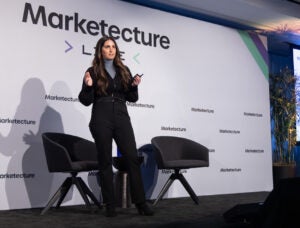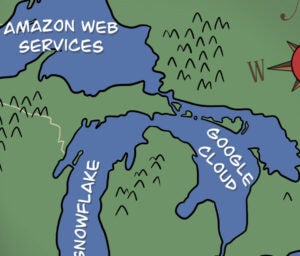Roku’s midyear finances reveal mixed signals.
Revenue totaled $847 million for the second quarter, up 11% from this time last year. Its platform business, which includes revenue from both ad sales and content distribution, is also up 11% at $744 million. It’s a pivot back in the right direction after the platform business saw a steady growth decline this year, a deviation from its track record of double-digit growth, even dipping 1% last quarter.
So, why are the tables turning?
Roku added 1.9 million new active accounts in Q2, totaling 73.5 million global accounts, and made Nielsen’s Gauge report for the first time in May, with 1.1% of TV viewership nationwide. It helps that the company’s been licensing more IP from other programmers this year.
That explains the content side of things. But average revenue per user (ARPU) is $40.67, a 7% YOY drop from $44.10, because advertising revenue proved less promising. Roku didn’t disclose concrete numbers about its ad revenue, but it blamed stagnation on two things: the macroenvironment and the ongoing writers’ and actors’ strikes.
Roku is hit hard by these strikes because one of its most popular ad units – the billboard-like units on the Roku City screensaver – have been reserved primarily for media and entertainment (M&E) companies up until this summer.
Pining for advertising
Ad spend has “rebounded” in some categories, such as consumer-packaged goods, but remains strained in others, particularly M&E, the company’s new CFO, Dan Jedda, told shareholders on Thursday.
It will be “further pressured throughout the second half of the year by the limited fall release schedules [of new content] arising from the ongoing strikes,” Jedda said. “M&E has historically been our largest and highest-margin ad vertical.”
And, well, studios aren’t promoting new releases they can’t film.
Hence the lower ARPU: New account growth is outpacing the growth of the platform business, Jedda said. It’s one reason why Roku is laser-focused on getting other kinds of advertisers on the Roku City ad units.
“We don’t want to be overly reliant on any single vertical, so we’re diversifying ad revenue by offering ad placements historically only for M&E companies to other types of advertisers,” said Charlie Collier, president of the company’s media business, referring to the home screen.
McDonald’s became the first non-M&E company to advertise on the Roku City backdrop last month. Roku hopes to continue attracting a wider array of advertisers both with other types of interactive ad units and by plugging into new demand sources.
“Recently, we’ve been more actively engaged with other demand-side platforms (DSPs),” Collier said. “And these relationships have long-term potential. No doubt, we’re getting [ad] budgets that we weren’t getting before.”
Roku didn’t name names or share numbers, but said it’ll take more time for these DSP partnerships to become a bigger part of the company’s growth.
Ad revenue still seems unpredictable for Roku, but the company remains confident in the future of its business. “Advertising is cyclical, but our long-term opportunity in streaming remains unchanged,” said CEO Anthony Wood.
Investors seemed to buy it. Roku shares jumped 9% during after-hours trading on Thursday.














